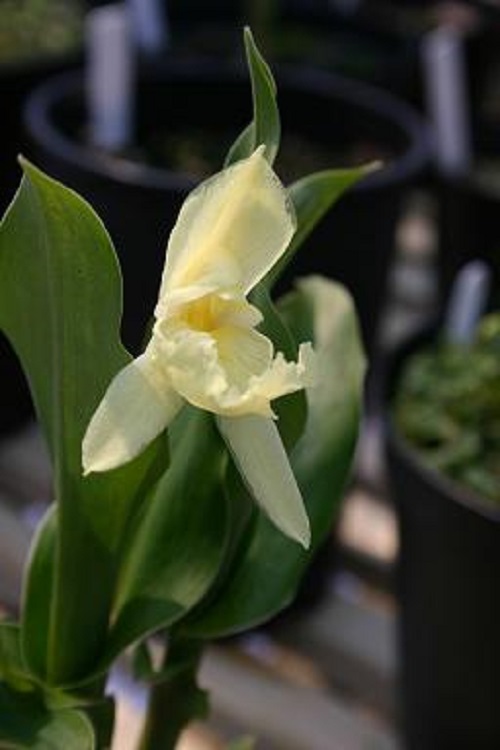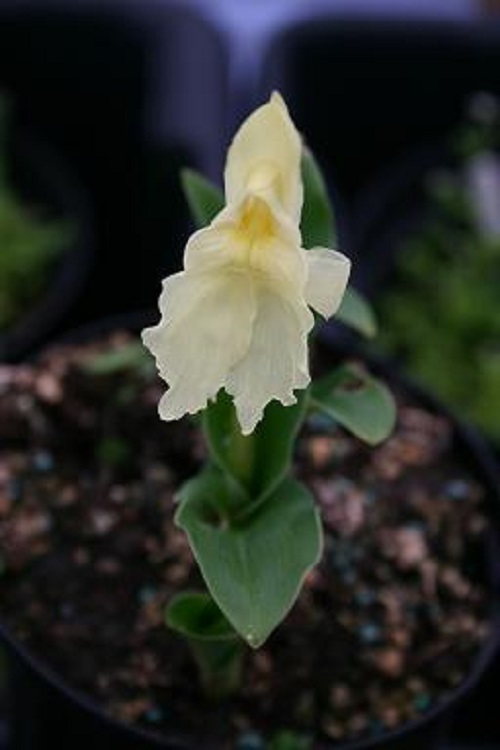Roscoea kunmingensis elongatobracteata
 |
 |
 |
| 7th July 2008 |
5th July 2009 |
|
Roscoea kunmingensis elongatobracteata is lilac to mauve flowered, the small
undistinguished flowers obscured partially by the elongated bracts.
The Flora of China says:
"Leaves to 4.2cm wide. Bracts 2.5 - 3.5cm, to 8cm after anthesis. Fl.June."
Paul Christian says in his 'Rare Plants' catalogue for 2005:
"A new introduction, this rare dwarf males only 15cm of growth and one to three short broad leaves which curl around one or two flowers of delicate pink-purple.
The flowers do vary from pale pink to almost white or in same cases are bicoloured, we do not have separate colour forms (and thus cannot supply them as yet)
but none of these are bad and all are distinctly different."
I have two plants supplied under the name. This purple one is the right colour but otherwise wrong, I think this is a form of R. tibetica.
|
 |
 |
 |
 |
 |
| 21st June 2005 |
7th June 2006 |
8th June 2006 |
10th June 2007 |
23rd June 2018 |
I also have this yellow plant, which seems to be Roscoea cautleyoides
|
References:
Flora of China Online, http://www.efloras.org/florataxon.aspx?flora_id=2&taxon_id=200028432 , accessed 19.11.2024.
Cowley, Jill - The Genus Roscoea, Royal Botanic Gardens Kew 2007.
Dunlop, Gary - 'The Genus Roscoea', Bulletin of the Alpine Garden Society, Vol.76, Part.2 (2008).
Wilford, Richard - 'Roscoeas for the rock garden', Bulletin of the Alpine Garden Society, Vol.67, Part.1 (1999).
Wilford, Richard - 'Roscoea on trial', The Plantsman, Vol.11, Part.2 (2012).

21st June 2005
Roscoea kunmingensis elongatobracteata is lilac to mauve flowered, the small
undistinguished flowers obscured partially by the elongated bracts.
My picture, however, shows a large flowered yellow plant with moderate floral bracts.
It was supplied to me in good faith, but it shows the sort of chaos that still exists in
commercial stocks of Roscoeas.
This plant seems to be a form of R.cautleyoides, and flowered at the end of june, and then
again on secondary growths at the end of august.

7th July 2008
I also have this form, which is a closer match to the species, but it doesn't have the elongated bracts that give the subspecies its name.

23rd June 2018








